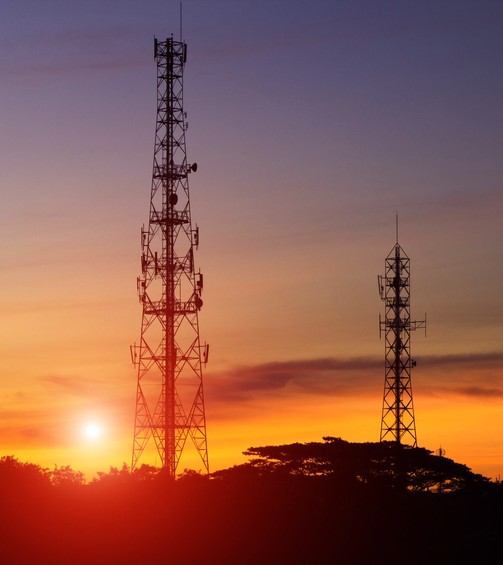It is reported that Reliance Jio made the highest earnest money deposit (EMD) for participating in the auctions
New Delhi, NFAPost: According to sources privy to the development, Indian telecom companies like Bharti Airtel, Reliance Jio and Vodafone Idea have applied for participation into Rs 3.92 lakh crore spectrum auction which will be starting from March 1.
The decision of telecom companies come at a time when they are reeling under financial stress and new norm brought out by Covid-19 pandemic. In this round, 2,251.25 Megahertz (MHz) of the spectrum will on auction in in seven frequency bands which are 700 Mhz, 800 Mhz, 900 Mhz, 1800 Mhz 2100 Mhz, 2300 Mhz and 2500 Mhz — at a cumulative base price of Rs 3.92 lakh crore.
“Bharti Airtel, Reliance Jio and Vodafone Idea have submitted applications (for the spectrum auction),” reported the news source.
Bharti Airtel’s 12.4 MHz of spectrum in the 900 MHz band and 47 MHz in the 1800 MHz band, as well as Reliance Communications’ 44 MHz of spectrum in the 800 MHz band will come up for renewal. Vodafone Idea needs to renew 6.2 MHz of spectrum in the 900 MHz band and 38.2 MHz in the 1800 MHz band.
In the upcoming auction, the telecom operators may get the 900 megahertz band which is used for 4G services for less than half the price in several circles compared to the amount paid by telecos in previous auctions.
As the competition is heating up for getting spectrum, it is learnt that Reliance Jio has made the highest earnest money deposit (EMD) for participating in the upcoming auctions. According to Arvian Research, Jio is looking at all the possible avenues to gather the maximum of amount of the spectrum.
“The company wants it along with additional airwaves for its future game plans so that it can stay ahead of the competition. We belive that Reliance Jio would have invested for all 22 telecom circles, in each band. This would have totalled a deposit of at least Rs 7,800 crore,” states Arvian Research.
EMD, or the minimum deposit for the premium 700-megahertz (MHz), to be sold in the block size of 5 MHz (paired) is Rs 3,660 crore. This is the most expensive band on offer in the auctions.
The Telecom Regulatory Authority of India (TRAI) came up with a Consultation Paper on Auction of Spectrum in 700 MHz, 800 MHz, 900 MHz, 1800 MHz, 2100 MHz, 2300 MHz, 2500 MHz, 3300-3400 MHz and 3400-3600 MHz bands during 2017.
The base price in the 800 Mhz band has been lowered because spectrum in this band remained unsold in 15 of the 19 circles that were put for auction in 2016. Bids were received only for radiowaves in Gujarat, Punjab, Rajasthan and UP East.
As per ICICI Securities, in the upcoming auction the final price for 800 MHz spectrum is 18.5% lower than the October 2016 auction price, which should benefit the relevant operators.
The base price of spectrum in 1800 Mhz band and 2300 Mhz band has been fixed 14.5% and 17.5% higher than the October 2016 base price, according to ICICI Securities.
The Department of Telecom has also increased base price of 700 Mhz in North East and Jammu and Kashmir circles to Rs 34 crore compared to Rs 30 crore recommended by the telecom regulator Trai.
According to a Business Standard report Trai, in August 2018, came out with its recommendations on spectrum pricing, wherein the regulator reduced the base price of frequencies that went unsold in the 2016 auction.
The reserve price for the premium 700 MHz spectrum, which went unsold in 2016, was reduced by more than 40 per cent to Rs 6,568 crore per MHz (all-India), from Rs 11,485 crore in 2016, reports Business Standard
Trai recommended a base price of Rs 4,651 crore for paired spectrum in the 800-MHz band (covering 19 circles), Rs 1,622 crore per MHz for the 900-MHz band (covering seven circles), Rs 3,399 crore per MHz in the 2,100-MHz band (covering 21 circles), and Rs 821 crore per MHz in the 2,500-MHz band (covering 12 circles). It also suggested Rs 960 crore per MHz for unpaired spectrum in the 2,300-MHz band on a pan-Indian basis, reports the paper.
Business Standard also finds that the spectrum bands from 3,300 MHz to 3,600 MHz, which are the 5G airwave bands, have been kept aside.





